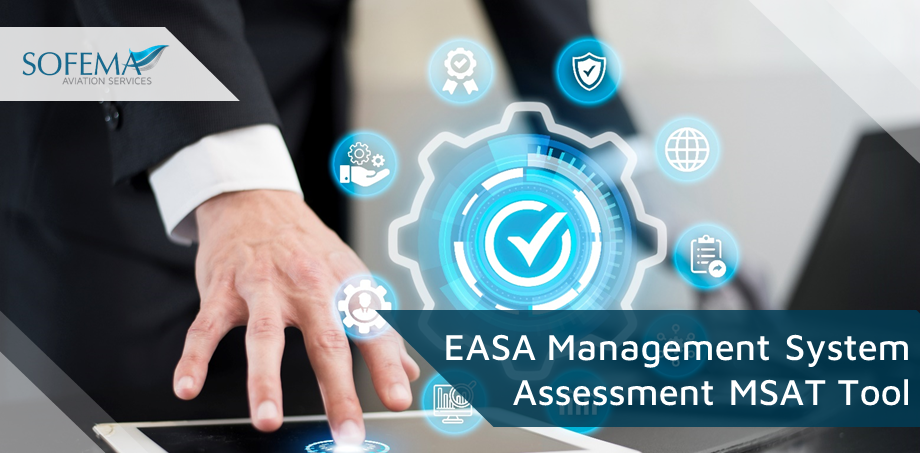Sofema Aviation Services (SAS) www.sassofia.com considers the key attributes of the EASA Management System Assessment MSAT Tool – Its role and primary uses.
Introduction
The EASA Management System Assessment Tool (MSAT) plays a critical role in enhancing aviation safety within the European Union by providing a structured framework for evaluating the effectiveness of management systems in the industry.
- Developed under the guidance of the EASA Regulatory Advisory Group (now known as the Member States Advisory Body), MSAT is a collaborative effort that involves experts from both the industry and competent authorities.
- Its primary role and purpose are multifaceted, focusing on both the initial certification and continuing oversight of aviation organizations’ management systems.
Primary Role and Purpose of MSAT
- Facilitate Assessment of Management Systems: MSAT is designed to support competent authorities in assessing the effectiveness of an organization’s management system.
o This includes both initial certification assessments and ongoing oversight activities.
- Promote Safety Management Systems (SMS): By integrating the principles outlined in ICAO Annex 19 and the ICAO Safety Management Manual, MSAT emphasizes the importance of establishing and maintaining an effective SMS.
o It focuses on the traditional four pillars of an SMS:
- safety policy and objectives.
- safety risk management.
- safety assurance and
- safety promotion.
- Support Compliance Monitoring: Apart from assessing SMS elements, MSAT also evaluates an organization’s compliance monitoring system.
o This is essential for ensuring compliance with relevant EU regulations and standards.
- Enable Continuous Improvement: MSAT encourages organizations to use the tool not only for regulatory compliance but also as a means for continuous self-improvement.
o Organizations can assess their management systems’ effectiveness, identify areas for improvement, and implement best practices for enhancing safety.
- Facilitate Performance-Based Oversight: By moving beyond a mere compliance-based approach, MSAT supports the shift towards performance-based oversight.
o This approach focuses on assessing and improving the actual performance and effectiveness of management systems rather than just checking compliance against a set list of requirements.
- Encourage Collaborative Approach: MSAT serves as a bridge between competent authorities and organizations, fostering a collaborative approach to safety management.
o It allows for a common understanding of management system effectiveness and supports mutual acceptance of safety management practices across different domains.
Challenges and Best Practices for Effective Use
Implementing MSAT involves overcoming several challenges, such as the complexity of integrating safety management activities, shifting from a compliance-based to a performance-based oversight model, and ensuring adequate training and competence among users.
To address these challenges and ensure the effective use of MSAT, best practices include:
- Developing comprehensive training programs tailored to different roles within an organization.
- Implementing continuous feedback mechanisms to improve the tool based on user experiences and evolving safety management practices.
- Applying MSAT flexibly, adapting its use to the specific needs and contexts of different organizations.
- Encouraging engagement and collaboration between organizations and competent authorities to achieve a shared goal of enhancing aviation safety.
By focusing on these roles, purposes, and best practices, MSAT aims to significantly contribute to improving safety management and oversight within the aviation industry, aligning with both EU regulations and international safety management standards.
Next Steps
Follow this link to our Library to find & download related documents for Free.
Please see Sofema Aviation Services (www.sassofia.com) and Sofema Online (www.sofemaonline.com) or email team@sassofia.com for questions, comments or suggestions.
Tags:
Safety Risk Management, SAS blogs, Safety promotion, ICAO Annex 19, Safety Management Systems (SMS), Competent Authorities, EASA Management System Assessment, MSAT Tool, EASA Regulatory Advisory Group, Member States Advisory Body, ICAO Safety Management Manual, SMS elements, EU regulations





